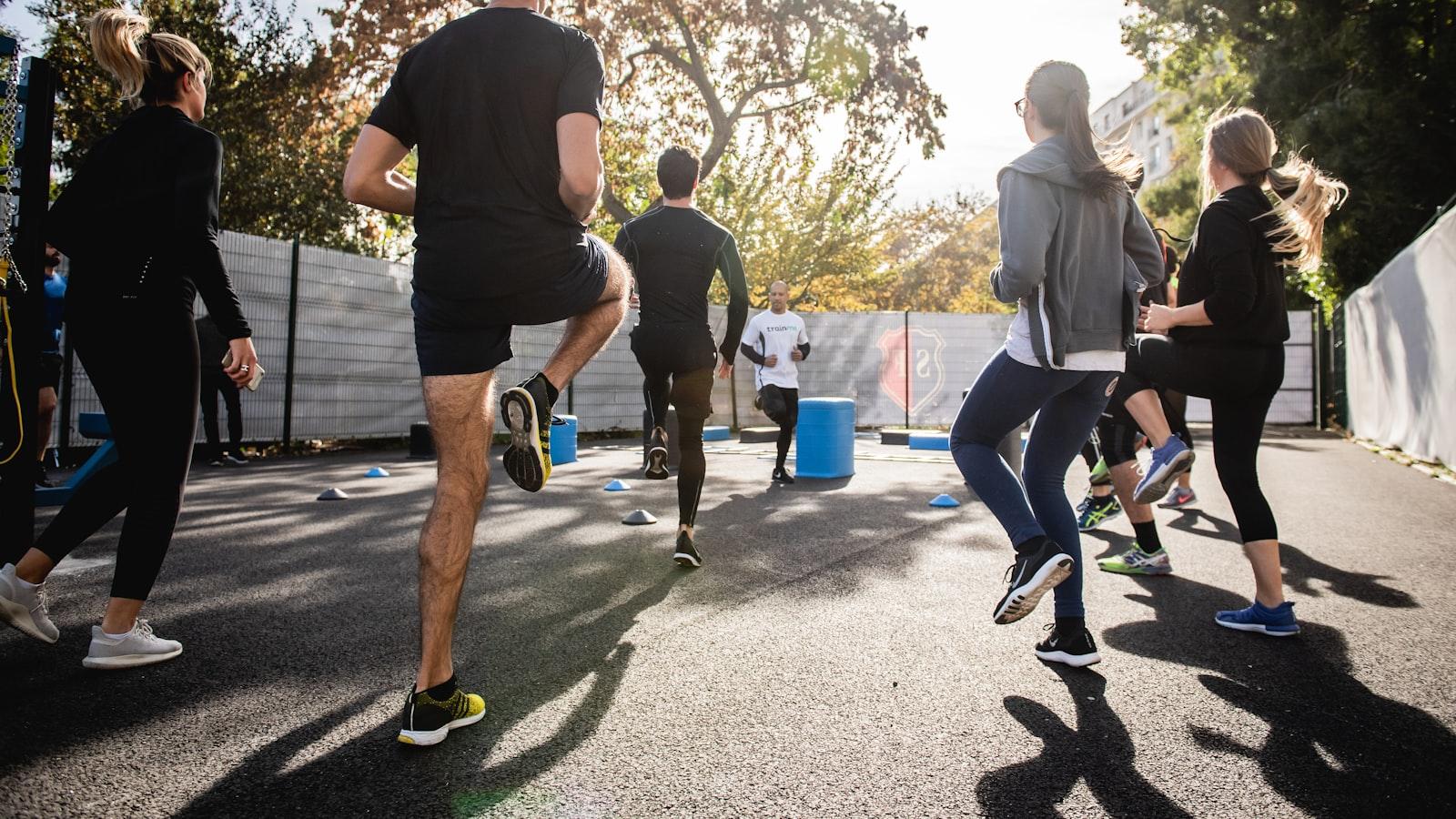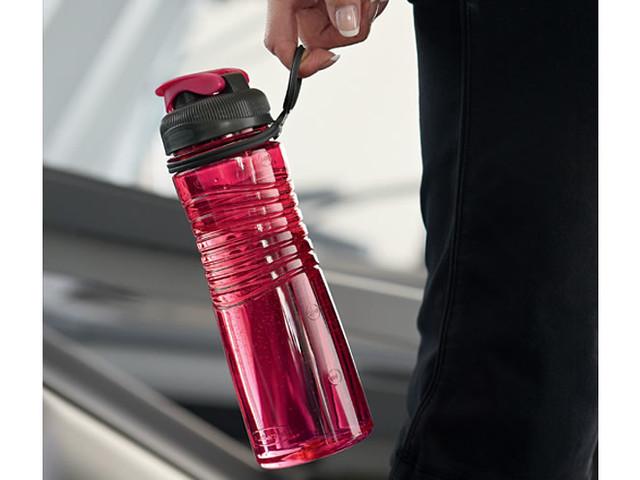Title: Quenching the Thirst: Unmasking the Secret to Preventing and Treating Exercise-Induced Dehydration
Introduction:
In the wild, succulent flora stealthily adapt to their arid environments, navigating survival by storing precious moisture within their anatomical reservoirs. Similarly, our bodies too possess an intricate system, honed through evolution, capable of maintaining equilibrium in the face of relentless physical exertion.
However, there exists a formidable opponent: exercise-induced dehydration, a stealthy foe that gradually chips away at our bodily fortitude. With each sweaty bead that escapes our skin, a vital essence is lost, nudging us closer to the danger zone.
Fear not, dear readers, for within the labyrinth of knowledge surrounding exercise-induced dehydration lies a map that unveils the path to prevention and effective treatment. Join us as we embark on an enlightening journey to equip ourselves with profound insights, ingenious methods, and practical tips that will empower us to face the challenge head-on.
As we delve into the depths of this article, we shall peel back the layers of wisdom, uncovering the science behind dehydration during exercise. Through a neutral lens, we strive to expand your understanding of this oft-misunderstood phenomenon, shedding light on the overarching impact it holds not only on athletes but also on fitness enthusiasts around the globe.
So, prepare to quench your intellectual thirst as we explore the intricate interplay between exertion and hydration. Dust off your curiosity and blend it with the captivating canvas of science. Together, let us decipher the enigma of exercise-induced dehydration and arm ourselves with the knowledge to safeguard our body’s delicate balance.
Buckle up, dear readers, as we embark on this illuminating expedition that will leave us better equipped to conquer the challenges that lie ahead. Sharpen your senses, ready your quenching arsenal, and unleash the full potential of your endurance. Together, we shall triumph over exercise-induced dehydration and toast to a refreshed and revitalized future.
Understanding the Causes and Effects of Exercise-Induced Dehydration
Preventing and Treating Exercise-Induced Dehydration
Exercise-induced dehydration occurs when the body loses more fluid than it consumes during physical activity. This can lead to a variety of negative effects on both athletic performance and overall health. is crucial in order to prevent and treat it effectively.
Causes of Exercise-Induced Dehydration
- Excessive sweating: When we exercise, our bodies naturally cool down through sweat. However, excessive sweating without proper rehydration can lead to dehydration.
- Inadequate fluid intake: Failing to consume enough fluids before, during, and after exercise can contribute to dehydration.
- High-intensity exercise: Engaging in intense physical activity can cause rapid fluid loss through sweat.
Effects of Exercise-Induced Dehydration
- Decreased performance: Dehydration can impair endurance, strength, and overall athletic performance. It can lead to muscle cramps, fatigue, and decreased concentration.
- Heat-related illnesses: When the body loses too much fluid, it struggles to regulate its temperature, increasing the risk of heat exhaustion or even life-threatening heat stroke.
- Impaired cognitive function: Dehydration can negatively affect brain function, leading to confusion, dizziness, and difficulty focusing.
Preventing exercise-induced dehydration is essential for optimizing performance and maintaining good health. Here are some strategies:
- Hydrate before, during, and after exercise: Drink plenty of fluids, such as water or sports drinks, to replenish lost fluids and electrolytes.
- Monitor urine color: Aim for a light yellow or clear urine color, as darker urine indicates dehydration.
- Dress appropriately: Wear breathable and moisture-wicking clothing to help regulate body temperature and reduce excessive sweating.
Treating exercise-induced dehydration
If you or someone you know is experiencing dehydration symptoms, it’s important to take immediate action. Here are some steps to take:
- Stop physical activity: Rest and stop exercising to prevent further fluid loss.
- Rehydrate: Sip on water, sports drinks, or consume hydrating foods such as fruits and vegetables.
- Cool down: Find a cool and shaded area and apply cold compresses to help regulate body temperature.
- Seek medical attention if necessary: If dehydration symptoms persist or worsen, it’s crucial to seek professional medical advice.
By understanding the causes, effects, and treatment of exercise-induced dehydration, you can make informed decisions to prevent and manage this condition, allowing you to perform at your best and stay healthy.
Effective Strategies for Preventing Dehydration during Exercise
Dehydration is a common concern for individuals who engage in physical activity, as the body loses water through sweat during exercise. To prevent and treat exercise-induced dehydration, it is essential to adopt effective strategies that promote hydration and maintain optimal fluid levels in the body.
One vital strategy is to ensure adequate fluid intake before, during, and after exercise. Before starting your workout, make sure to hydrate by drinking at least 16-20 ounces of water or a sports drink. During exercise, it is crucial to drink fluids regularly to replenish the water lost through sweat. Aim to consume about 7-10 ounces of fluids every 10-20 minutes, especially in longer workout sessions. Remember, hydration needs may vary depending on factors such as intensity, duration, and environmental conditions. Additionally, always listen to your body and drink when you feel thirsty, as thirst is your body’s way of signaling the need for hydration.
In addition to fluid intake, it is important to pay attention to electrolyte balance. Electrolytes such as sodium, potassium, and chloride are crucial for proper hydration and muscle function. Including a sports drink or electrolyte-rich beverages can help replenish these essential minerals lost through sweat. Another effective strategy is to consume water-rich foods like fruits and vegetables, which not only contribute to hydration but also provide valuable nutrients. Additionally, monitoring urine color can help determine hydration levels. Clear or pale yellow urine is a good indicator of adequate hydration, while dark-colored urine may be a sign of dehydration. By following these strategies, you can prevent exercise-induced dehydration and ensure optimal performance during workouts.
| Hydration Tips | Benefits |
|---|---|
| Drink water before, during, and after exercise. | Prevents dehydration and supports optimal fluid balance. |
| Consume sports drinks or electrolyte-rich beverages. | Replenishes essential minerals lost through sweat. |
| Include water-rich fruits and vegetables in your diet. | Provides hydration and valuable nutrients. |
| Monitor urine color to assess hydration levels. | Clear or pale yellow urine indicates adequate hydration. |

Hydration Tips for Treating Exercise-Induced Dehydration
One of the most common issues faced by athletes and individuals who engage in rigorous physical activities is exercise-induced dehydration. Dehydration occurs when the body loses more fluids than it takes in, leading to a range of negative effects on performance and overall health. To prevent and treat exercise-induced dehydration, it is crucial to follow some essential hydration tips.
1. Drink Plenty of Water: Staying hydrated begins well before your workout. Make sure to drink an adequate amount of water throughout the day to ensure your body has enough fluids to sustain you during exercise. Carry a water bottle with you, and sip water regularly, even if you don’t feel thirsty.
2. Electrolyte Balance: When you sweat, you not only lose water but also vital electrolytes like sodium, potassium, and magnesium. Replenishing these electrolytes is essential for restoring hydration. Consider consuming sports drinks or coconut water that are high in electrolytes to maintain a healthy balance.
| Hydration Tip | Benefits |
| Monitor Urine Color | It can indicate dehydration levels. Aim for light yellow-colored urine as a sign of proper hydration. |
| Frozen Fruit Ice Cubes | Add them to your water for a refreshing twist and a hint of natural flavor. |
By incorporating these hydration tips into your routine, you can effectively prevent and treat exercise-induced dehydration. Remember, proper hydration is not only crucial for optimizing performance but also vital for your overall well-being. Stay hydrated, perform at your best, and conquer your workouts with confidence!

Incorporating Electrolyte Replacement to Combat Dehydration
Dehydration can be a serious risk during exercise, impacting both performance and overall health. To prevent and treat exercise-induced dehydration, incorporating electrolyte replacement is crucial. Electrolytes, such as sodium, potassium, and magnesium, are essential minerals that our bodies need to function properly. When we sweat, we lose these electrolytes, which can lead to imbalances and dehydration.
One effective way to incorporate electrolyte replacement is by consuming sports drinks that are specifically designed to replenish these essential minerals. These drinks are formulated with the perfect balance of electrolytes and carbohydrates to help restore hydration and fuel your body during exercise. Additionally, incorporating foods rich in electrolytes into your diet can also help prevent dehydration. Some examples of these foods include bananas, avocados, and coconut water, which are not only delicious but also packed with the necessary minerals your body needs. Remember to always stay hydrated before, during, and after exercise by drinking plenty of water and incorporating electrolyte-rich options into your routine.
| Electrolyte | Food Source | Benefits |
|---|---|---|
| Sodium | Pickle juice | Aids in fluid balance and nerve function |
| Potassium | Bananas | Helps regulate fluid balance and muscle contractions |
| Magnesium | Pumpkin seeds | Supports muscle and nerve function, as well as hydration |
Remember, staying properly hydrated is essential for optimal performance and overall well-being. By incorporating electrolyte replacement strategies into your exercise routine, you can combat dehydration and ensure that your body has the necessary minerals it needs to thrive. So, make hydration a priority and give your body the support it deserves!
Key Takeaways
In the realm of physical challenges, our bodies often undertake a symphony of miraculous processes to achieve greatness. However, amidst the sweat, determination, and adrenaline, there lies a silent villain known as exercise-induced dehydration. Like a stealthy predator, it creeps in unnoticed, casting a shadow over our triumphs and threatening to disrupt our carefully choreographed performances.
But fear not, fellow warriors of the fitness domain! Armed with knowledge and armed with resolve, we can outsmart this cunning adversary and emerge triumphant in our quest for peak physical performance. By understanding the causes, symptoms, and preventive measures, we will become masters of our own hydration destiny.
The road to combating exercise-induced dehydration begins with awareness. Knowledge is power, and understanding why our bodies succumb to the treacherous claws of dehydration is the first step towards victory. Appreciating the importance of our internal water-exchange system, comprehending the sneaky nature of sweat, and recognizing the signs of fluid deficiency are essential weapons in our arsenal.
Once we grasp the intricate dance between our bodies and H2O, it is time to embrace a proactive approach. We must become architects of our own hydration plans, building pillars of hydration before, during, and after exercise. The ticking clock becomes our ally as we strategize consuming fluids well in advance, commanding hydration checkpoints during our sweat-inducing activities, and replenishing our bodies post-battle.
But mere prevention is not alone sufficient. For those warriors who have experienced the draining effects of dehydration firsthand, a comprehensive treatment plan is crucial in their pursuit of redemption. Balancing the scales and replenishing lost fluids through rehydration techniques like oral rehydration solutions, consuming water-rich foods, and indulging in the delight of electrolyte-rich beverages allows those who have stumbled to rise again.
As we conclude this journey of enlightenment into the realm of exercise-induced dehydration, it is important to remember that we are not alone in our quest for optimal fitness. From athletes to weekend warriors, individuals across the globe are united in their pursuit of greatness, sharing a common thread in fighting against dehydration’s dark grip. Let us stand together, armed with knowledge, equipped with determination, and fortified with hydration; for only through unity can we conquer this adversary that shadows our every step.
So, fellow warriors, let us march forward, raising our water bottles high, as we defy the lurking grasp of exercise-induced dehydration. A new era of performance awaits us, where our bodies will thrive, our accomplishments resound, and our victories will be drenched in sweat, unspoiled by the trickery of dehydration. Onward, to a world where endurance and hydration intertwine, forging a path where greatness will reign supreme.
